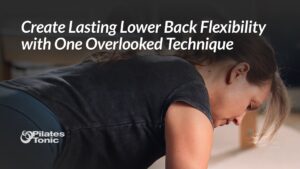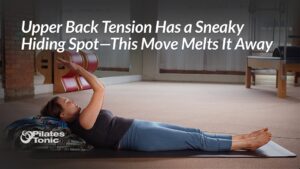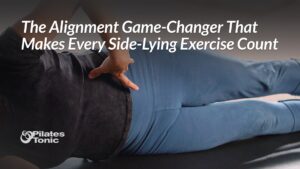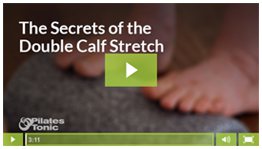
I just returned from an outstanding workshop with fascia expert, or “fascianado” Dr. Robert Schleip, one of the leading researchers in a relatively newly recognized category of body research into fascia and fascial structure.
I had two flights to get to Los Angeles. On each flight the person sitting next to me asked what I was going be doing while in L.A. I said I was attending a workshop on fascia. Both people thought I said fashion the first time. I explained that it wasn't a fashion workshop, but a workshop about connective tissue that's all over the body and explained that I was a movement/Pilates teacher.
I was surprised that they each had the same joking reaction: “Oh, you're going to learn more ways to cause people pain!” I have noted for a long time that this is a common misconception about Pilates.
Of course I let them know that, in fact, I was going to learn the exact opposite of creating pain. I would be learning how to help people create less pain and discomfort in their bodies, as well as how to move more freely and easily. To this they also each had the same exact response: “That's what I need.”
A healthy fascial structure is one of the keys to living comfortably in the body. In this article, I'll just barely begin to skim the surface of fascia and all its surprising functions, but you'll learn some of the most important and useful things I think you should know about your fascia.
What Is Fascia?
In Latin, the term fascia means “to connect”. Fascia itself is a web-like, collagenous substance that connects everything in our entire body. It looks like a matrix of spiderwebs.
Fascia is not just a superficial layer beneath the skin, though. It forms a continuous tensional network throughout the entire body. It covers and connects every single organ, nerve and every single muscle fiber. Fascia includes the ligaments, tendons, and joint capsules and is predominately made up of free-moving and bound water molecules. Fascia literally connects everything in the body.
You might say that we're all wearing fascial bodysuits. 🙂
For decades, those who study human anatomy have considered the fascia little more than white packing material for the organs; just pressing and holding all the organs and muscles in place.
It was essentially stuff to be cut away, removed and thrown out in order to get at the “real” elements inside the body that makes it tick. Fascia was almost completely disregarded.
What research has shown during the last ten or so years is that fascia does not have a minor, one-word line in a B-rated movie about our bodies. Quite the contrary, it turns out—fascia has a leading role in an Oscar-winning film!
Injuries Seldom Happen In the Muscles or Bones
Injuries actually happen most often in the connective tissues (ligaments and tendons) due to overloading of the fascial tissue.
Just as bone density proved to respond to the way we load our bodies, fascia responds in a similar way. The way we live and move throughout our day will determine the health of our fascial structure.
The iliotibial tract, or IT band, provides the perfect example of a fascial structure that profoundly affects the way we move:
The IT band is located on the outside, upper part of the leg, between the knee and hip. If you've ever been to class where we roll out the IT bands with the roller you know exactly what I'm talking about!
The IT band develops a firmness as a response to walking, running or jumping.
If we spent hours and hours each day straddling a horse like a cowboy instead of walking around on the ground, our inner thighs would develop a firmness like that of the IT band and the outer part of the thigh would stay softer. I find this fascinating—it shows that how we move and hold our bodies has profound and long-term affects on our physical structure !
What Do Humans and Kangaroos Have In Common?
A kangaroo's muscles aren't large enough to give it the power to jump the height and distance that it does. This baffled scientists and led them to explore what gave kangaroos their jumping power. If it wasn't powerful musculature propelling these animals forward, what was it?
They discovered a spring-like action responsible for the kangaroo's unique jumping ability. The tendons and fascia in its legs is tensioned like an elastic band and stores energy. When that energy is released it springs it forward into those amazing jumps. This is called elastic recoil.
Soon after the discovery in kangaroos, the same discovery was found in gazelles and similarly in… drumroll please… humans.
In my mind, I see the elastic recoil like these toy cars my son plays with. You place the car on the floor and pull it backwards so the wheels wind up. When you let the car go, it flies across the floor.
The elastic recoil plays a part in how we walk, run and jump. It also keeps us light on our feet. Moving with light, quiet footsteps is a good sign of walking, or running elastically. Heavy or loud footsteps is a sign of walking or moving more muscularly.
More muscular movement requires a lot more energy and isn't nearly as efficient or sustainable as moving elastically.
How Do I Train My Fascia?
It's possible to develop a new fascial structure with proper training in about six months to two years. The movements needed are simple and easy to incorporate into your week. They also feel really good physically and are super fun!
Fascial training doesn't replace your current wellness or fitness routine—it compliments it. Adding specific movements just once, or twice a week is enough to get results!
I'm pretty excited because the movements fit into what we are already teaching at Pilates Tonic. I'm already incorporating these movements into the private sessions I teach, as well as the Stretching & Flexibility class on Friday mornings.
Dr. Schleip compared the fascia research excitement over the last ten years to the 19th century gold rush. And I totally get that. These new discoveries are mind-blowing and exciting. They are changing the way we look, talk and work with our bodies and will be more valuable than gold in terms of our current and future health.
If you have an experience with fascia that you'd like to share, or if you have a question, leave a comment below and I'll be happy to reply.
Free Fascia Workshop in February
If you are interested in learning more, I am teaching a free fascia workshop on Friday, February 8 from 6:45 – 8:00pm. I'll be discussing more on how training your fascial structure works as well showing some exercises you can incorporate into your activities that will help you develop a new fascial structure that will serve you for the rest of your life.
I anticipate this fascia workshop will fill quickly. Sign up now to reserve your spot (and come prepared to have fun!).
As always, I love to hear from you!
See you at the studio,
Sydney





6 Responses
Hi Sydney,
Just wanted to say i love your articles and wish i was closer to attend your workshops, I’m in the UK.
so intrigued and excited please….let me know the magic exercises so i can pass them on to my clients.
Alison x
I’m so glad you are enjoying the posts. I’ll keep you posted as we come up with creative ways to share information 🙂 Thank you for your feedback!
Cara Miss Sydney,
You are always on the cutting edge of the most important insight in our field. I praise the way you give and give and
give to your students and enlighten us from afar!
I have a few clients that are in major pain and can’t even begin to think about “stretching”. Your article on fascia
was the answer that reminded me on how I can help them.
Duh… time to go over my Anatomy Trains again.
Thank You for all your hard work and sharing this valuable information that we all need to remember.
With utmost respect and affection,
Shelly – Italy
Shelly thank you for your feedback. I love sharing knowledge and love hearing that you find it helpful. It motivates me to do more…so thank YOU!
Thank you for sharing an informative and comprehensive article.. Very well explained .. I really appreciate your work. Keep it up..
I’m glad this was helpful, Nico. Thanks so much for letting me know!